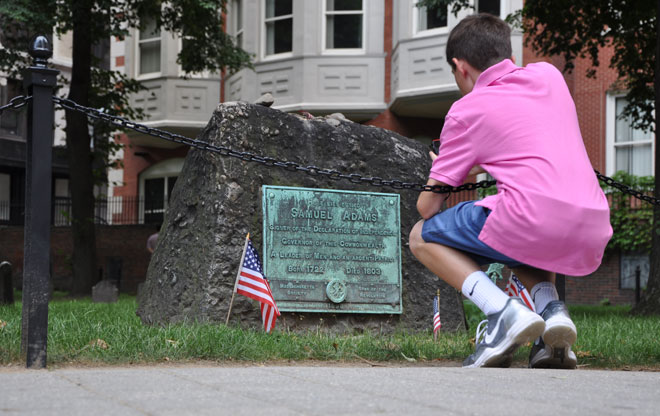
Samuel Adams Lies Here
Perhaps no name in the Burying Ground is as well-known as that of Samuel Adams, whose grave occupies a prominent position on Tremont Street. In fact, because the grade of the cemetery is elevated so much higher than the sidewalk that now runs alongside it, a view of the gravestone at eye-level can be obtained before you even step into the space.
Image: Susannah Ross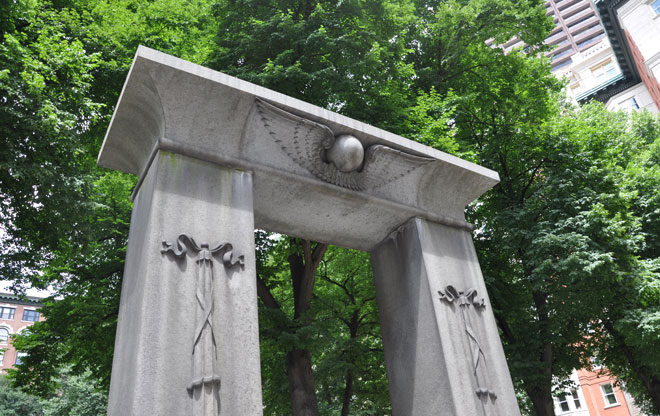
Egyptian Revival Gate
The grand Egyptian Revival gate and fence, designed by Isaiah Rogers, were added to the site in 1840. The bold gesture announces the entry point for people now following the Freedom Trail, but suggests that 180 years after the Burying Ground’s founding there was a desire to permanently define the space and more appropriately honor those buried within.
Image: Susannah Ross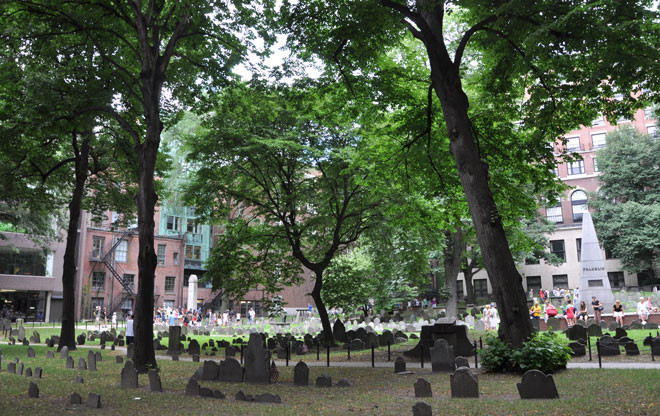
Enclosed by Trees
The ground is surrounded on three sides by buildings, but the towering trees and their canopies do more to define and enclose the space than the surrounding architecture. The sunny, prominent spot occupied by the Franklin monument is one place where visitors can actually sit and touch a piece of the site’s history.
Image: Susannah Ross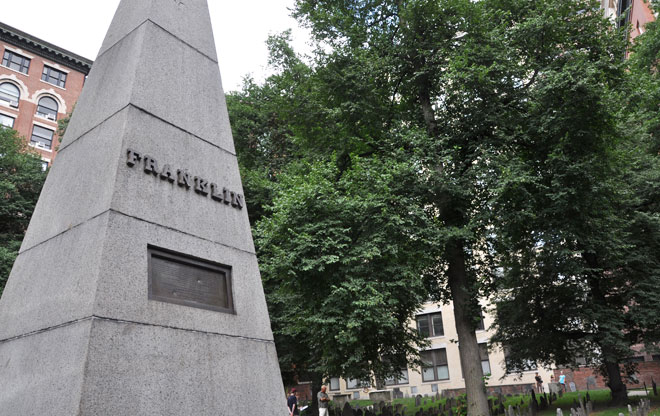
For the Franklins
Benjamin Franklin is buried in Philadelphia, but his parents and relatives are buried here and honored by a soaring granite obelisk, carved from the same quarry as the Bunker Hill Monument. Just as the Revival Gate is a prominent but not original part of the ground, this monument was installed in 1827, years after the Franklins were buried, when their original gravestones began to deteriorate.
Image: Susannah Ross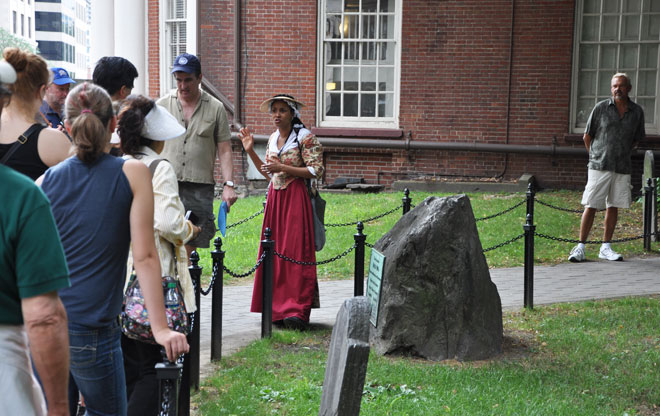
Guides in Colonial Dress
Guides in colonial dress lead tourists through the cemetery and admittedly add to the historic flavor of the place. The recent addition of traditional chains and posts provides a gracious but effective means of keeping visitors to the paved walk, without detracting from the visual experience of the place.
Image: Susannah Ross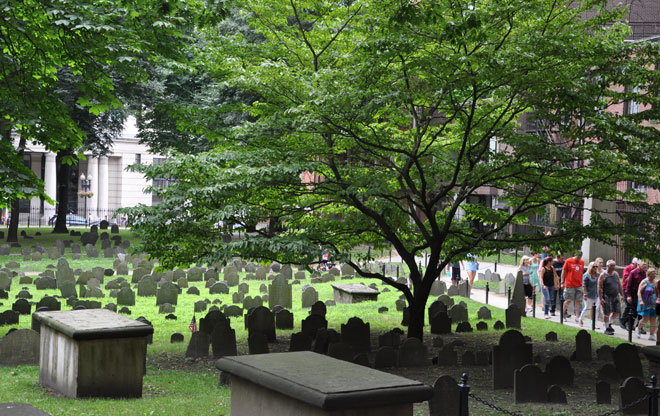
Specimen Trees
Though a number of prominent specimen trees now shelter the space casting beautiful bands of light and dark across the gently sloping lawn, the ground was devoid of trees in the center until 1830. Up until that time tree planting on the site—and one can imagine, shade—had been limited to a row of massive European elms lining Tremont Street. These are now gone.
Image: Susannah Ross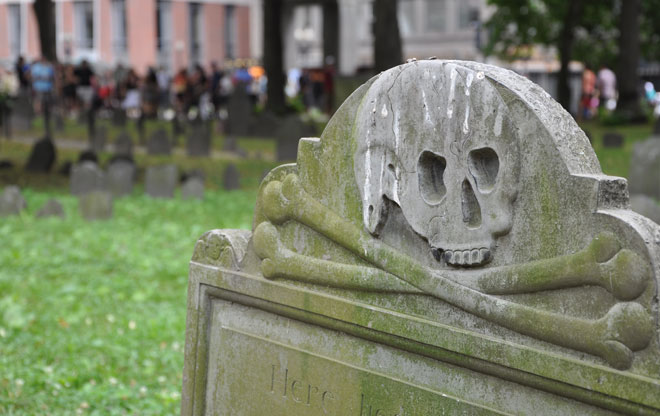
Skeletal Symbols
Undeniably, part of the intrigue and atmosphere of the Burying Ground landscape comes from the skeletal symbols etched onto some gravestones, which may strike a modern day visitor as somewhat sinister.
Image: Susannah Ross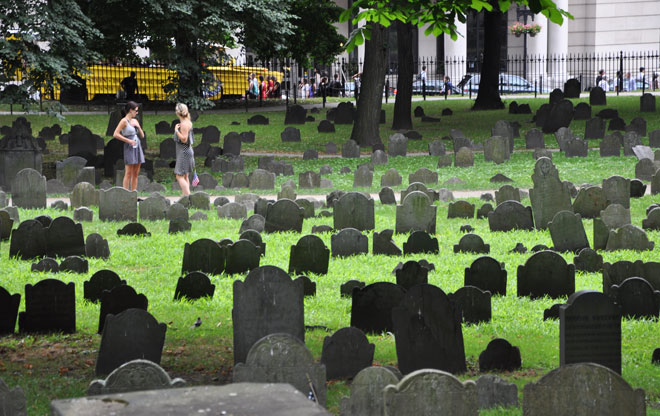
Headstones Rearranged
The rows of gravestones mark the space and register in a series of layers the distance from foreground to background, where a somewhat incongruous bright yellow Duck Boat sails past on Tremont Street. The orderly rows in which we see the headstones now were not actually their original configuration. Records show that they were originally installed haphazardly, and then reorganized in the 1800s to conform with modern sensibilities of neatness and to the use of lawn mowers.
Image: Susannah Ross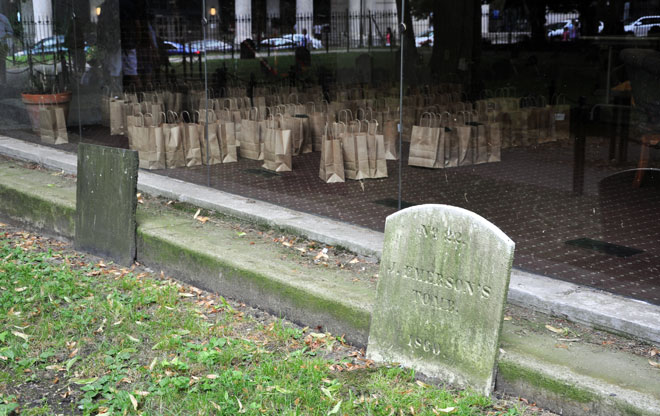
Every Inch Used
In a city as densely populated as Boston, no square foot of land goes unused, and even the property line of the historic Burying Ground has been squeezed to the inch, leaving these gravestones little breathing room. Here a glassy function space—with no doubt spectacular views of the cemetery—abuts a headstone dating from 1860. It’s hard not to notice how the rows of gift bags inside eerily mirror the rows of burial markers outside.
Image: Susannah Ross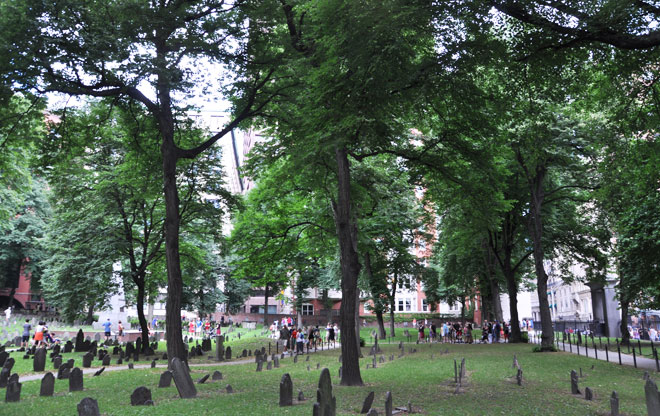
Elements Address Each Other
From the southwest edge of the Burying Ground, a visitor can take in the clean lines of the Revival Gate and the Franklin Obelisk addressing each other across the space, highlighting the more gnarled and textured surface of the ground, its sometimes skewed headstones, and the trees above.
Image: Susannah Ross